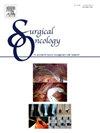Comparison of histopathological margins after resection of oral squamous cell carcinoma using sharp dissection versus mono-polar electrocautery in T1 and T2 tumors
Abstract
The study aims to compare histopathological margins after resection of oral squamous cell carcinoma (OSCC) with different surgical techniques: conventional sharp resection (SR) with scalpel versus monopolar electrocautery (ME). Hence, the question arises whether thermal damage by performing monopolar electrocautery surgery will lead to close margins more frequently than by using scalpels. 152 patients were included in this study. All patients received a primary tumor resection either performed with SR or with ME. Surgical margins were distributed into two groups: ≥5 mm (clear margins) and < 5 mm (close or involved margins). For comparing homogeneous groups, we considered tumor localizations, diameter and depth of invasion. The results were statistically analyzed by applying the Wilcoxon-Mann-Whitney-U-Test. The distribution of tumor diameter and depth of invasion was equal in both groups. There was no statistically significant difference between the amount of free surgical margins using SR or ME (p = 0.884). According to this study, the use of the monopolar electrocautery for tumor resection in the oral cavity does not increase the rate of compromised resection margins compared to the conventional scalpel.

 求助内容:
求助内容: 应助结果提醒方式:
应助结果提醒方式:


